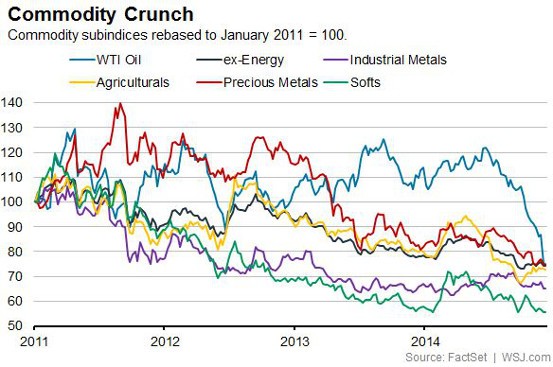Monetary policy and commodity prices
Post on: 7 Июль, 2015 No Comment

Search form
Monetary policy and commodity prices
Jeffrey Frankel 29 May 2008
In a speech delivered last week, Federal Reserve Vice Chairman Donald L. Kohn addressed a theory to which I am partial: the theory that low real interest rates have contributed to the continued rise in prices of agricultural and mineral commodities, including oil, over the last year. He said:
“Some observers have questioned whether the news on fundamentals affecting supply and demand in commodities markets has been sufficient to justify the sharp price increases in recent months. Some of these commentators have cited the actions of the Federal Reserve in reducing interest rates as an important consideration boosting commodity prices. To be sure, commodity prices did rise as interest rates fell. However, for many commodities, inventories have fallen to all-time lows, a development that casts doubt on the premise that speculative demand boosted by low interest rates has pushed prices above levels that would be consistent with the fundamentals of supply and demand. As interest rates in the United States fell relative to those abroad, the dollar declined, which could have boosted the prices of commodities commonly priced in dollars by reducing their cost in terms of other currencies, hence raising the amount demanded by people using those currencies. But the prices of commodities have risen substantially in terms of all currencies, not just the dollar. In sum, lower interest rates and the reduced foreign exchange value of the dollar may have played a role in the rise in the prices of oil and other commodities, but it probably has been a small one.”
( Speech at the National Conference on Public Employee Retirement Systems, New Orleans, Louisiana, May 20, 2008).
As real interest rates have come down over the last year, real commodity prices have accelerated upward despite declining economic growth. as shown in Figure 1, where the commodity price has been inverted so that one can see the correlation visually.
Figure 1. The real interest rate and commodity prices, January 2007 – April 2008
The effect of interest rates can be demonstrated both theoretically and empirically. I have argued that the effect can come through any of three channels: inventories, production, and financial speculation.
Historically, real interest rates have had an inverse effect on oil inventories (when controlling econometrically for three other relevant factors). Nevertheless, I have to admit that inventory levels have not over the last year risen in a way that would support the theory. I thus have to rely more on the other channels of transmission to explain recent developments.
Stocks of oil held in deposits underground dwarf those held in inventories aboveground, and the decision how much to produce is subject to the same calculations trading off interest rates against expected future appreciation that apply to inventories. (The classic reference is Hotelling’s Rule.)
Apparently the Saudis have decided to leave theirs in the ground. “King Abdullah, the country’s ruler, put it more bluntly: ‘I keep no secret from you that, when there were some new finds, I told them, ‘No, leave it in the ground, with grace from God, our children need it’.’’’ (Financial Times 19 May). I see the interest rate as part of the Saudis’ decision. Because the current rate of return on financial assets is abnormally low, they can do better by saving the oil for the future than by selling it today and investing the proceeds. Holding back production raises today’s oil price, to a point where the expected future return on oil has fallen to the same level as the interest rate. Hence the inverse effect of real interest rates on real oil prices. The same logic governs others’ decisions regarding how much copper to mine, how much forest to log, etc.
In addition to the link from world real interest rates to world real commodity prices, there is a further link from individual countries’ real interest rates to commodity prices expressed in their own currencies. This link primarily passes through their exchange rates: A country that eases monetary policy relative to the United States will experience a depreciation of its currency, and a proportionate further increase in commodity prices expressed in its own currency. For small countries with commodity markets perfectly integrated into world markets, the link comes entirely through their exchange rate. But some mineral markets and particularly agricultural markets are not in fact perfectly integrated, so that some of the effect of local monetary policy may come through local inventory or underground channels rather than the exchange rate.
The equation governing real commodity prices in a non-dollar country is (Frankel 2006):
where
- is the real price of commodities in terms of currency j
- is the real-fundamentals price of commodities in terms of currency j
- is the US interest rate
- is the interest rate in country j
- is convenience yield of holding the commodity (net of storage costs and risk premium)
Table 1 reports results on data from the last 56 years.














